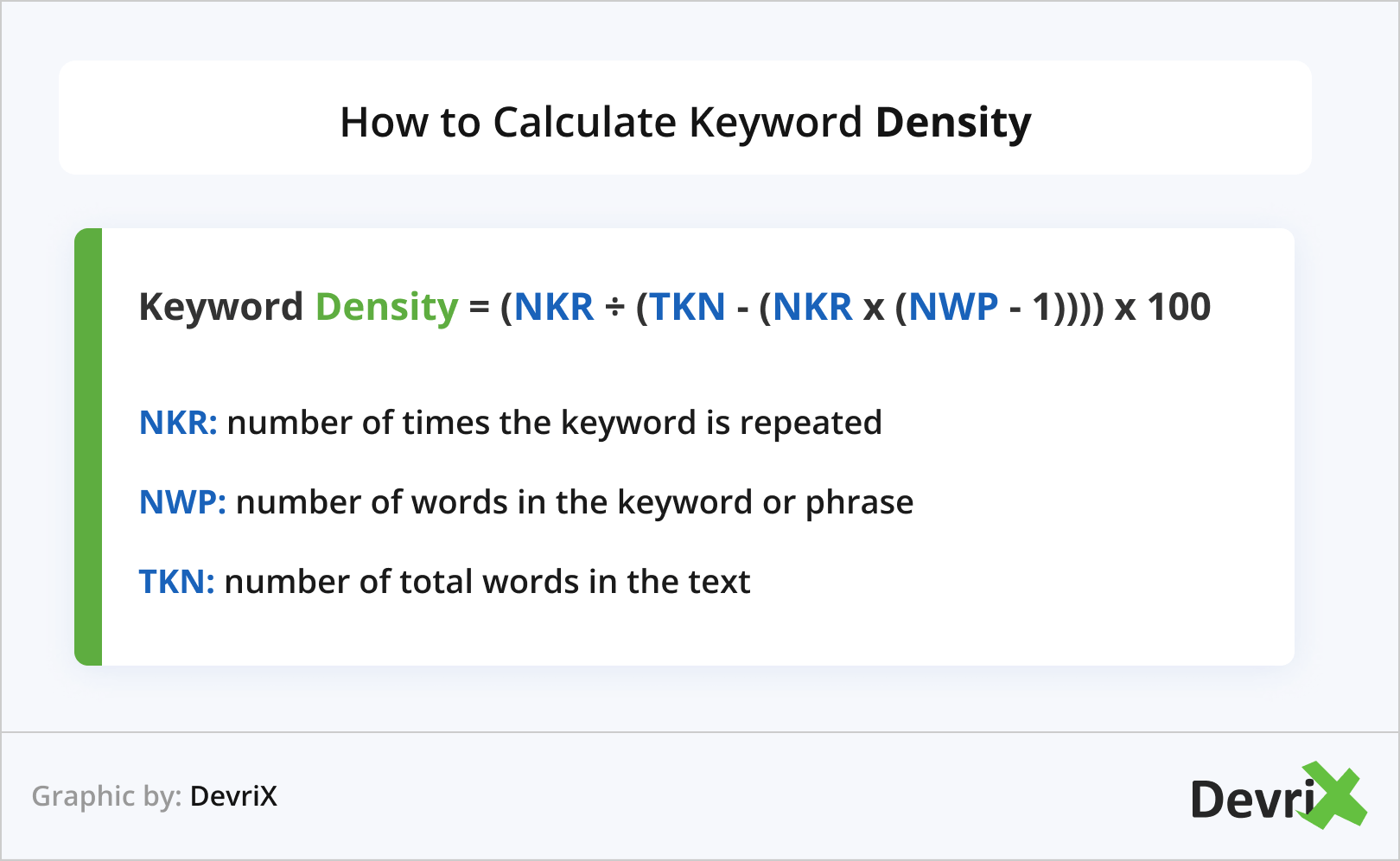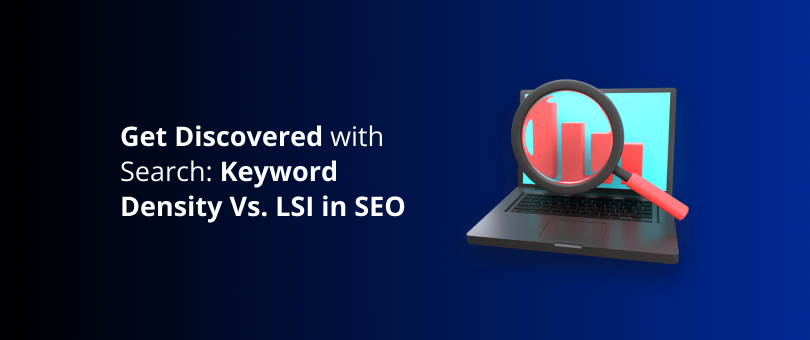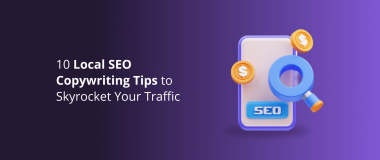In SEO, keyword density and LSI (Latent Semantic Indexing) play a big role in the way you develop your content to make it more visible in the SERPs.
SEO is a complex and dynamic field, which makes it difficult to master, and even more challenging to retain the results. However, pushing on is worth your while, as it enables your business to build a digital presence, achieve online visibility, and reach a broad audience of potential clients.
To make this happen, there is much work to be done in regards to technical SEO and off-page optimization.
However, first and foremost, your website should be optimized with the proper keywords. Otherwise, even if you provide nothing less than the best possible user experience and high-quality content, people may still not be able to discover your pages, and all your efforts will be in vain.
Keyword optimization, though, is not a straight-forward task. You need to use the optimal keyword density for web content – but how do you know when you used your search terms enough, and know how much is too much?
At the same time, LSI SEO also shouldn’t be underestimated, as Google’s crawler bots should be able to understand your content, and figure out how it relates to other entities in their knowledgebase.
And that’s what makes it so complicated.
So in this article, we talk about what is keyword density, how to do LSI SEO, and, ultimately, how to balance the two to get discovered with Search!
Let’s find out!
Importance of Keywords for Search Engines

If you are just starting your journey across the SEO world, the first thing that you need to learn about are keywords – those are the terms and phrases that users key in when they use search engines to look for information.
When crawling online content to index it, search engine bots do their best to analyze and understand what pages are about, and correlate them with user queries. This way, they can provide relevant links in the search engine result pages (SERPs).
When you use these same words that your target audience is searching, you make it easier for bots to make the connection and show your content to people who are looking for similar information.
The better SEO optimized your content is, the more often it shows in the SERPs, and the more likely people are to click on it, and your website to get discovered with search.
In a nutshell, using keywords helps you bring organic traffic to your website. This means that search engines show your content to users for free, as opposed to paid traffic, which is when you pay to have your links shown as ads in the SERPs, positioned before the organic results.
Once you’ve found your target persona, you will need to research which words and phrases matter to your customers. Once you build a keyword list, you’ll also need to plan how to place the terms on your website – the section has to be optimized with relevant keywords.
When you place your keywords in your website, think about what Google actually appreciates when it comes to web ranking. When people search for the exact name of your brand, it is understandable that your homepage will be ranked number one. But, when people search for specific information, the search engine algorithm is going to serve relevant information. Optimizing every page of your website for a relevant keyword ensures that they will be more visible in organic search.
Related: How To Find Low Competition Keywords with Commercial Intent
What Is Keyword Density in SEO?
Keyword density tells you how often a search term appears in a text in relation to the total number of words that the text contains. For example: if a keyword appears three times in a 100-word text the keyword density would be 3%.
Why Is Keyword Density Important for SEO?

If you’re careful with your keyword density and apply this tactic without breaking the white hat SEO rules, Google will know that your pages are on a given topic and revolve around the keyword that you are targeting. This is what gives your website positive search rankings, relevance, and a healthy keywords presence. And these help you get discovered with search.
But, you should be careful not to overdo it. Keyword stuffing will create a spammy experience for the users. It is a black hat SEO tactic that makes the text sound unnatural and provides an unpleasant user experience
One of Google page-quality criteria is that the content provides value and is created for humans and not for robots. This means that the text is written with the user in mind, and not the bots.
There isn’t an exact recommended keyword density percentage. Back in the prehistoric era of Google, you would’ve gotten away with a keyword density as high as 5 or 6%. However, search engine algorithms are evolving. and things are different today.
So you are probably already wondering what is the optimal keyword density for web content. As of today, it is somewhere between 0.5% and -2.5%, but definitely not above 3%.

How to Calculate Keyword Density
When you look at all the factors that Google uses to calculate your web ranking and all the percentages, you are probably already asking yourself how to calculate keyword density. But fret not, there’s a formula and it’s not as intimidating as it looks at first:

Keyword Density = (NKR ÷ (TKN – (NKR x (NWP – 1)))) x 100
In the equation, NKR stands for the number of times that a specific keyword or a phrase is repeated. NWP is for the number of words in a given keyword phrase. And TKN stands for the number of total words in the text.
The fact that there is a formula does not mean that you should strictly follow an “ideal” keyword density percentage in your web content and calculate it each time. However, what you need to be sure of is that your articles and blogs are mindfully written and relevant to your target customers.
There are also many calculators online as well as WordPress plugins for your website that can help you calculate the optimal density. But, your best bet is to always place your main keyword in the following areas of your webpage:
- In the page permalink
- H1 and H2 tags
- The meta title tag
- In the first paragraph of the intro
- In the conclusion
- As anchor text
Whatever you do with your keyword strategy, remember that you’re writing for actual human beings. Google can’t be fooled, especially with the new algorithm updates that strive to put user experience and content quality first.
Related: Top 7 Benefits of SEO for Small Businesses
What Is Latent Semantic Indexing (LSI) SEO?

According to the Search Engine Journal latent semantic indexing (LSI) is:
A mathematical method used to determine the relationship between terms and concepts in content. The contents of a webpage are crawled by a search engine and the most common words and phrases are collated and identified as the keywords for the page.
Google’s algorithms use natural language processing (NLP) to understand the relations between the words in sentences, and those between sentences, and thus they figure out the meaning of pages.
However, to better understand what the page is about, they use LSI to correlate it with what they already “know”. This puts the content and the words in it into context, and the bots can understand whether you are talking about Waterloo, the battle, or Waterloo, the station, for example.

This means that LSI algorithms assume that the words in your copy are naturally related to each other and that these words can appear in a different context.
Furthermore, words and phrases are semantically connected not only to synonyms or words that have a similar meaning, but to other words as well. Therefore, LSI can analyze whether the subtopics in your content correlate to your main keyword, and identify if your text is exhaustive enough.
Let’s say that you want to write an article about roads, so you choose the keyword “road”. But in terms of semantics, a “road” can have lots of meanings, especially in search engines:
- Road – A route, paved land between two places, highway
- A 2017 movie called Road
- ROAD – Regional Operative Administrative Department
- ROAD – The Icelandic Road and Coastal Administration
You can write for any of the given topics above. But, according to the rest of the text in your content, Google will know exactly what you’re talking about.
For example, if you write about roads in general, your copy will contain words like asphalt, lanes, length in kilometers, etc. If you write about the movie Road, you are likely to talk about the cast, plot, and maybe include a review. In both cases, your content will get discovered within searches related to the topic, and not be shown in others that simply match the word but not the meaning.
That’s what LSI is all about.

Related: What Are Search Engines Looking For? 17 Facts About SEO You Need To Know Right Now
Why Does Google Use Latent Semantic Indexing?
Before the big Google Panda update in 2011, the relevancy of pages was calculated based on keyword density. This led to abuse by spammers and marketers who wanted to rank first in the SERPs at all costs!
That’s why Google shifted the ranking criteria towards LSI keywords. Gradually, Google removed keyword density as the main ranking factor for websites, in favor of focusing on how relevant the content is to the actual meaning of a given search phrase.
For example, Samsung’s website will accommodate keywords that are closely related to Samsung products, such as the latest smartphones, TVs, home appliances, etc.This is why Google will match Samsung’s website as the number one search result when the consumers enter “Samsung” in the search bar.
Related: 10 Elements of a Highly Effective On-Page SEO
How LSI SEO Improves Your Ranking?

At this point, you already understand why Google now values the entire semantics and context of the content, rather than simple keyword density.
What this means, in practice, is that your main keyword and text relevance are your main advantage when it comes to your website ranking. They provide Google’s bots with the context of your pages, and help them properly position it amongst other similar content. .
The other major way that LSI SEO can, potentially, improve your web ranking and your content, is in fact, one of its main advantages over focusing on keyword density. It enables you to write naturally, and let the content flow and follow its logic, instead of repeating the same words and phrases over and over again.
This allows you to create more valuable text, and, in addition, can motivate you to explore a topic from more angles, and still retain focus. Thanks to LSI and NLP, Google can understand that you are talking about a certain topic, without the need of you constantly reminding it.
Of course, this doesn’t mean that you should ignore keyword density in SEO altogether, but that you can use keyword variations, and related keywords and still stay on-topic.
How to Use LSI Keywords to Improve Your Google Ranking?
First of all, make sure that your content sounds natural and organic to the reader. This way, you will show both the humans and the robots that you wrote the piece to provide value, and not only for SEO purposes. If you find it difficult to identify the appropriate keywords, you can always use tools that provide lists of related keywords and keyword variation.

If you do this right, you don’t have to worry about density anymore (aside from keyword stuffing, of course). In fact, your mindfully prepared and semantically meaningful content may perform better than when you focus solely on the main keyword and overuse it.
Furthermore, researching relevant long-tail keywords with high volume and low difficulty will help your rank easier for search terms that you otherwise don’t stand a chance for.
The best areas of your pages where you can use the alternative keywords and long-tail keywords are:
- Your page title
- The H1 and H2 headlines
- Meta tags
- URLs
- The alt text of your images
- Your first paragraph
- Anchor texts
- Last paragraph
Wrapping up
Brands and content marketers that know how to balance LSI SEO and keyword density are prone to achieve better performance of their pages in the SERPs.
Think about it from Google’s point of view. There is a desperate need for valuable, high-quality content online and Google constantly tries their best to make their algorithms good enough to recognize it.
To wrap things up, if you are consistent in your SEO efforts, strive for quality, and don’t abuse keywords, before you know it, your website ranking is bound to eventually organically skyrocket to the first page of Google.




